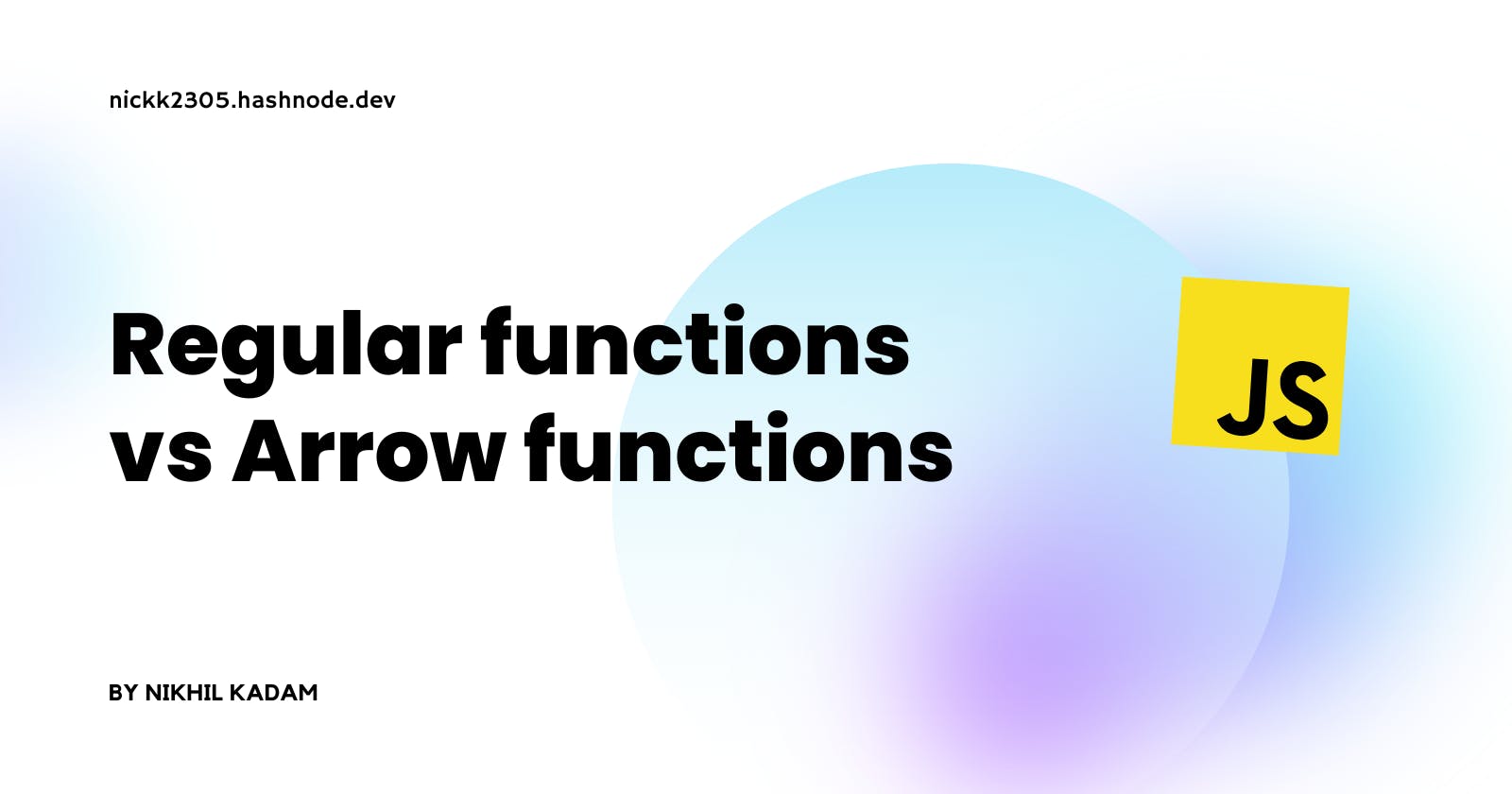Mastering JavaScript Functions: Regular Functions vs. Arrow Functions
An introduction to regular functions and arrow functions for beginners
Introduction
Hey there! Welcome to another amazing article in the JavaScript Series.
In this article, we'll be focusing on two types of JavaScript functions: regular functions and arrow functions. Understanding the differences between these two types of functions and when to use them can greatly improve the organization and maintainability of your code.
Regular Functions
Regular functions are defined using the function keyword and can be assigned to variables, and properties of objects, or passed as arguments to other functions.
They have their own this keyword and can be invoked using the () operator.
Example
Here's an example of a regular function that adds two numbers together:
function add(a, b) {
return a + b;
}
let result = add(1, 2);
console.log(result); // 3
Regular functions are great for defining reusable code and creating objects. However, they do have some downsides.
For example, the this keyword in regular functions can be a source of confusion and errors, depending on how the function is invoked.
Additionally, regular functions cannot be used in certain situations, such as callbacks, where arrow functions are a better choice.
Arrow Functions
Arrow functions, also known as fat arrow functions, were introduced in ECMAScript 6 and provide a shorter syntax for defining functions.
They are defined using the => operator and don't have their own this keyword. Instead, they inherit the this keyword from the parent scope.
Example
Here's an example of an arrow function that performs the same task as the regular function above:
let add = (a, b) => a + b;
let result = add(1, 2);
console.log(result); // 3
Arrow functions are great for situations where you need to pass a function as an argument to another function or use it as a callback.
Since they don't bind their own this keyword, you don't have to worry about any confusion or errors related to it.
Additionally, the shorter syntax of arrow functions can make your code more readable and concise.
Comparison 🆚
While both have their advantages and disadvantages, the main difference between them is the way they handle the this keyword.
Regular functions have their own this keyword, which can be a source of confusion and errors, while arrow functions inherit the this keyword from the parent scope.
This makes arrow functions a better choice for certain situations, such as callbacks.
Arrow functions have a shorter syntax than regular functions, which can make your code more readable and concise.
On the other hand, regular functions have a more flexible syntax and are great for defining reusable code and creating objects.
Best Practices ✅
When choosing between regular functions and arrow functions, it's important to consider the specific use case.
If you're defining a reusable function or creating an object, a regular function may be the better choice. However, if you're passing a function as an argument to another function or using it as a callback, an arrow function may be a better fit.
It's also important to write clean and maintainable code, regardless of the type of function you're using. Be sure to use descriptive function names and add comments to your code when necessary.
Conclusion ✍🏻
In this blog, we discussed how regular functions and arrow functions are both particularly useful for organising and structuring your code.
Understanding the differences between these two types of functions and when to use them can greatly improve the organization and maintainability of your code.
Resources 📑
If you want to learn more about these functions in JS, there are many great resources available online.
Some good places to start include:
Difference between Regular functions and Arrow functions on GeeksforGeeks.
The Difference Between Regular Functions and Arrow Functions
Thank you for reading! 🎉
That's it for this blog post. Thank you for reading this article!
If you enjoyed this article, be sure to subscribe to my newsletter to stay up-to-date with my content.
And if you need any help or have any questions, don't hesitate to reach out – I'm happy to help out. See you on Twitter! 👋🏻
